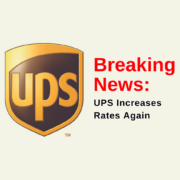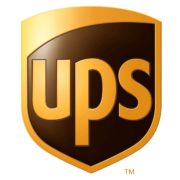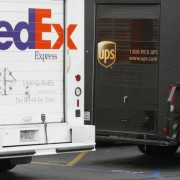UPS SurePost Rates 1 lb. or Greater increase more like 9% for most shippers
Late last year, UPS announced their Annual General Rate Increase which was advertised as impacting their customers’ rates by an average of 4.9%. Well we found at least one surprise in these rate increases affecting parcel shippers utilizing UPS’ Sure Post services.
So, first of all, what is Sure Post? According to the UPS website, “Sure Post combines the consistency and reliability of the UPS Ground network with final delivery typically provided by the U.S. Postal Service”.
The delivery time for SurePost packages is typically one day slower than UPS Ground. This is because on the day UPS would normally be dropping the package off at a customer’s door, it is instead dropping it off at the USPS branch nearest to the customer.
So while UPS announced their average rate increase would be 4.9%, when we examine the ACTUAL increase for UPS’ Sure Post product, we find a completely different story.
As you will see on the attached rate chart, the average increase for Sure Post packages for ALL shipments between 1 and 9 pounds to zone 2 through 8, is ACTUALLY 9%. The increase for packages weighing between 10 pounds and 70 pounds is actually 5.3%. And, what’s even more interesting about this is the fact that UPS’ base Ground rates across the board are actually less costly than the Sure Post rates. \
So why would a parcel shipper opt for the “slower” UPS Sure Post-delivery option if UPS’ base Ground rates are less expensive? That’s a great question and one that every parcel shipper needs to ask themselves before just assuming the slower delivery service results in lower costs. The reality is that if a parcel shipper is utilizing the Sure Post product, it MUST negotiate a discount with UPS to ensure their net costs will be lower than their net Ground rates.
It’s very clear to us that UPS intended to get the most bang for the buck with this Sure Post rate increase since the bulk of the packages they handle in this service are packages weighing between 1 and 9 pounds. Remember, the devil is ALWAYS in the details.
And, one final word as we enter this new year. All parcel shippers, and all shippers for that matter have a choice. They can accept the status quo as many companies have done year after year by allowing their carriers to increase rates annually without ever being questioned. Or, they can take charge of their company’s shipping expenses now by benchmarking all of the available services and shipping options available to them before allowing their shipping costs to go totally out of control.
Most importantly, shippers should not “go it alone.” Companies will need access to comprehensive parcel shipping analytics in order to make the right business decisions to ensure their shipping rates are the most competitive rates for the services being provided. They cannot do this in a vacuum without having all of the necessary data analytics to make the proper evaluations. Remember, help is available. We’d love to hear from you!
Check out our chart to learn more! SurePost Rates Over 1 lb 2019 vs 2018






